Jake at Econompic Data had a good post on credit and equity.? (He runs a good site generally.)? They are correlated, but not all of the time.? As I commented:
When yields are low, equities thrive because financing costs are low.
When the defaults come, future equity returns are low, because financing rates rise, killing some and wounding others.
When yield spreads are very high, future equity returns are high, because returns come as spreads tighten.
You can see more on pages 14-22 of this presentation that I gave:
http://alephblog.com/wp-content/uploads/2009/11/SEAC_Presentation.pdf
Though I promised some posts after my presentation to the Southeastern Actuaries Conference, I never followed up.? Here is part of my belated follow-up.
As I noted in my presentation:
- Credit and equity returns are closely correlated in bear markets.
- Illiquidity events become more common when equity prices are falling, and credit spreads rising.
- Complexity and structure raise illiquidity during crises.
- Bonds with negative credit optionality underperform in a crisis.
I would add that credit and equity returns are closely correlated coming out of a crisis as well.? But here are some examples, starting with 2007-2009
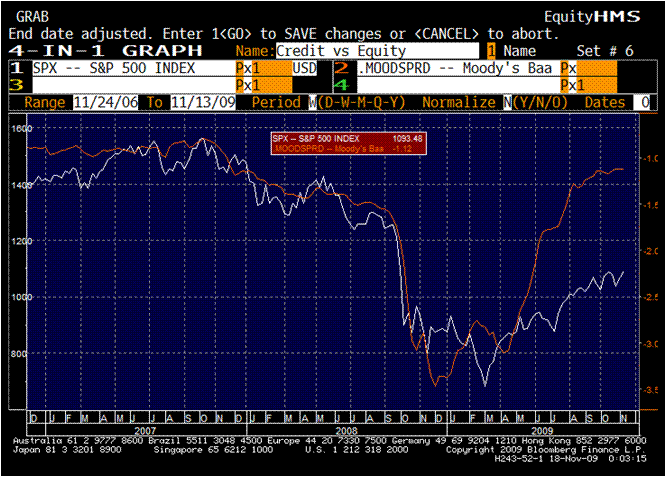
and then 1999-2004:
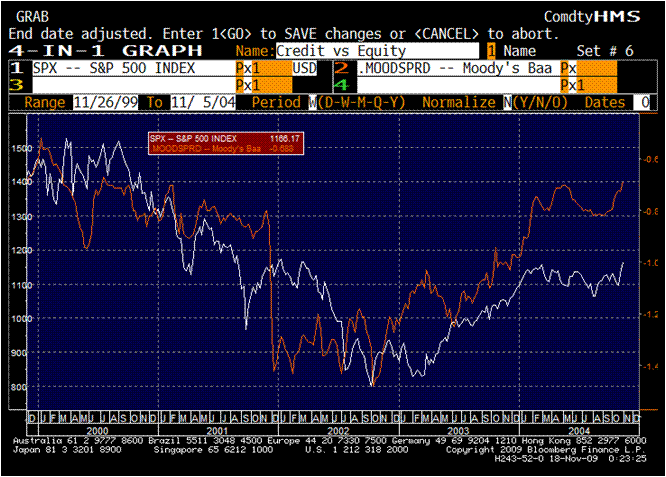
and then 1989-1993:

and then 1980-1983:
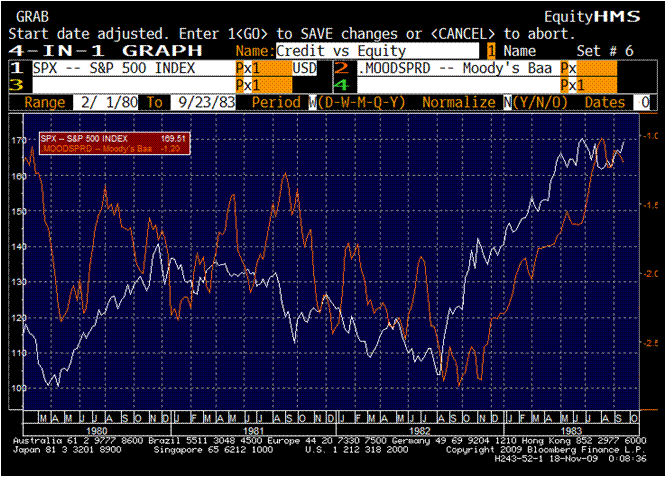
and then 1969-1975:
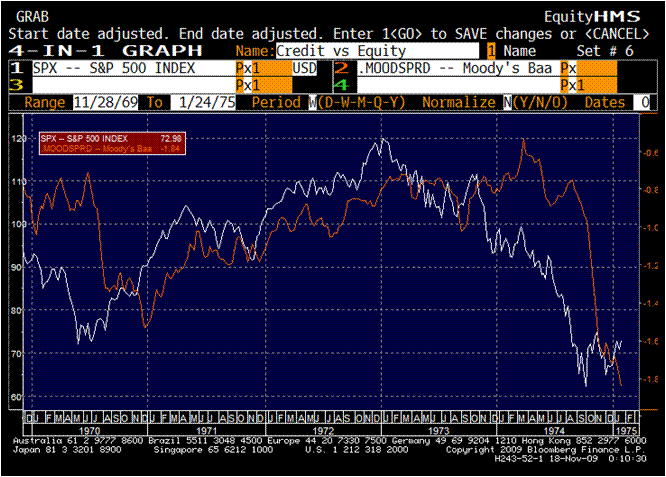
Finally, 1927-1944:
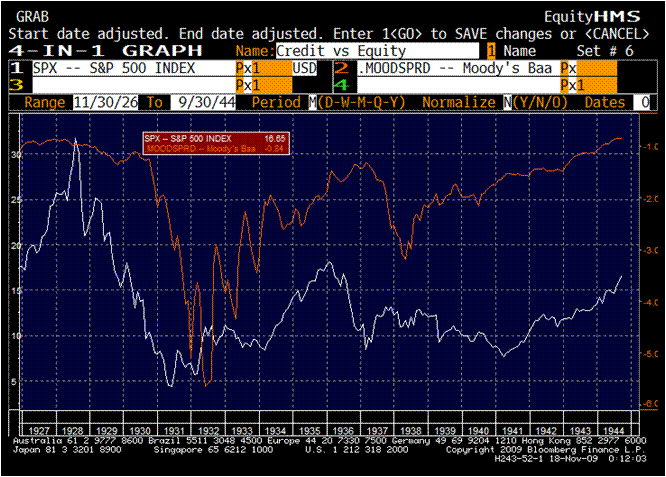
What I concluded:
- Credit booms are different ? equities rise, while credit spreads stay low and stable.
- There are sometimes exceptions when selloffs are sharp, like 1987 or 1998.
- Ignore what the government says. It is impossible to eliminate the boom-bust cycle. The best a good businessman can do is try to understand where he is in the cycle, and be prepared.
- Building liquidity looks dumb after credit spreads have been tight for a few years, but can save a lot of performance. The same is true of an ?up in credit trade.?
- During the bust phase, illiquid companies and investments get whacked. It is often good to ?leg into? such investments during the panic. This is when credit analysis really pays off, because during the panic, everything gets hit.
- Equity risk shows up in insurance lines of business like Surety, D&O, E&O, Mortgage, Financial, etc.
- If you have equity risk in your liabilities, reduce credit risk in your assets. Same is true if you need to regularly buy equity options. When implied option volatility rises, credit spreads tend to rise as well.
Notes:
There are few corporate yield series that date prior to 1990.? Until computers became powerful enough, bonds traded on a dollar price basis, and yields, much less spreads, were not comprehensively recorded.? One of the few corporate yield series with a long history is Moody’s Corporate Bond Indexes, which goes back to 1919.? There are some oddities to that index, but there aren’t many choices if you go back a long way.? It composed of bonds in a given ratings category, 20-30 years long, unweighted average on yields.? The averages tend to yield more than most bond managers that I have talked with think they can get.
My credit spread variable was the yield on the Baa series less that on the Aaa series.? I think it is a really good proxy for credit conditions and overall market volatility.
Anyway, this was part of a talk that I gave to the Southeastern Actuaries Conference.? I’ll do a few more posts from that, but if you want to look at the report, you can find it here.

I’m on my way to give a speech to a bunch of equity investors. Included is my observation that almost all of the equity analysts and portfolio managers I have known over the years don’t know enough about fixed income.
They don’t need to be experts, but they need to pay attention and know what to look for. At a minimum, they have to have someone who can tell them what’s going on and why it matters.
What I really like about your work is your ability to tie the two areas together in thoughtful ways.